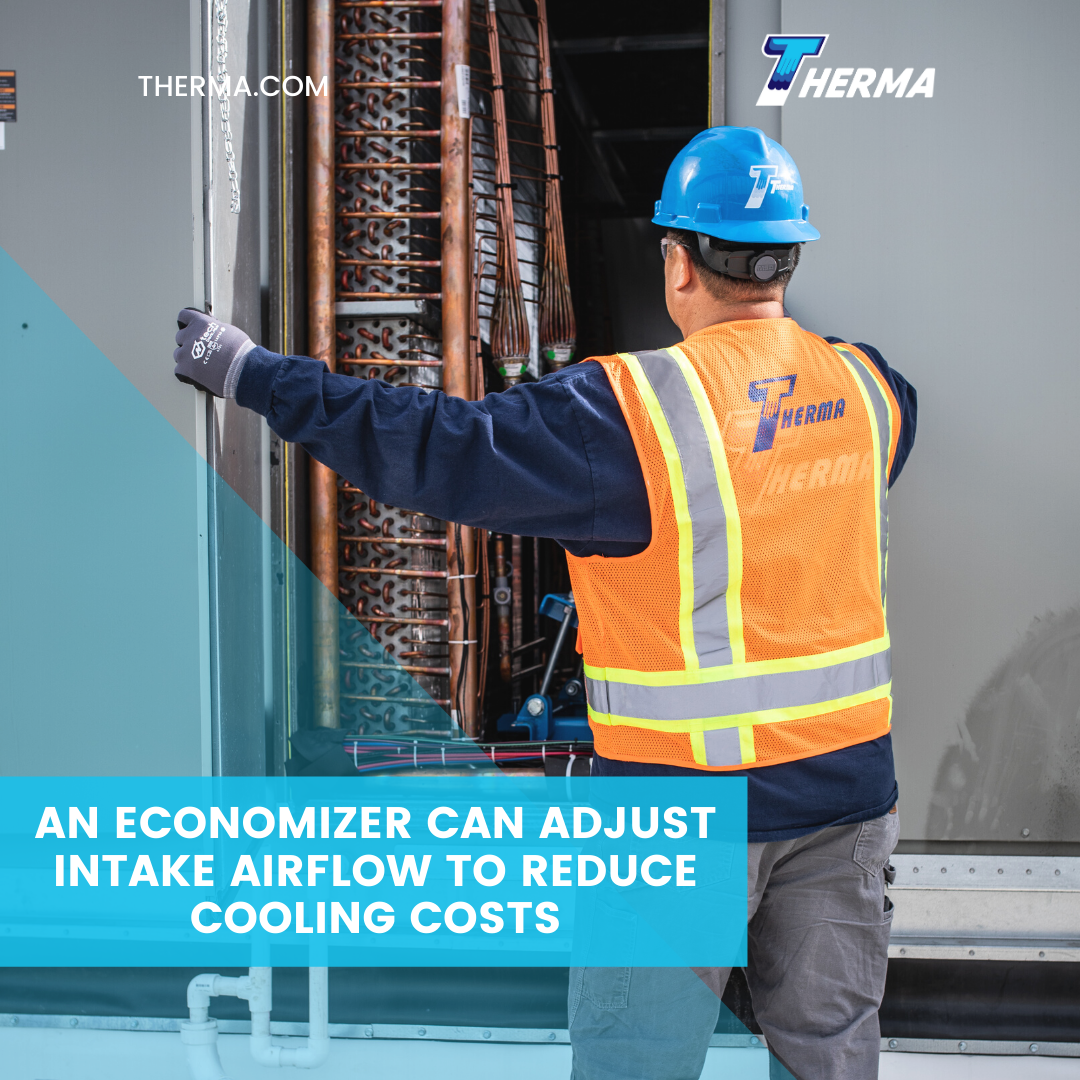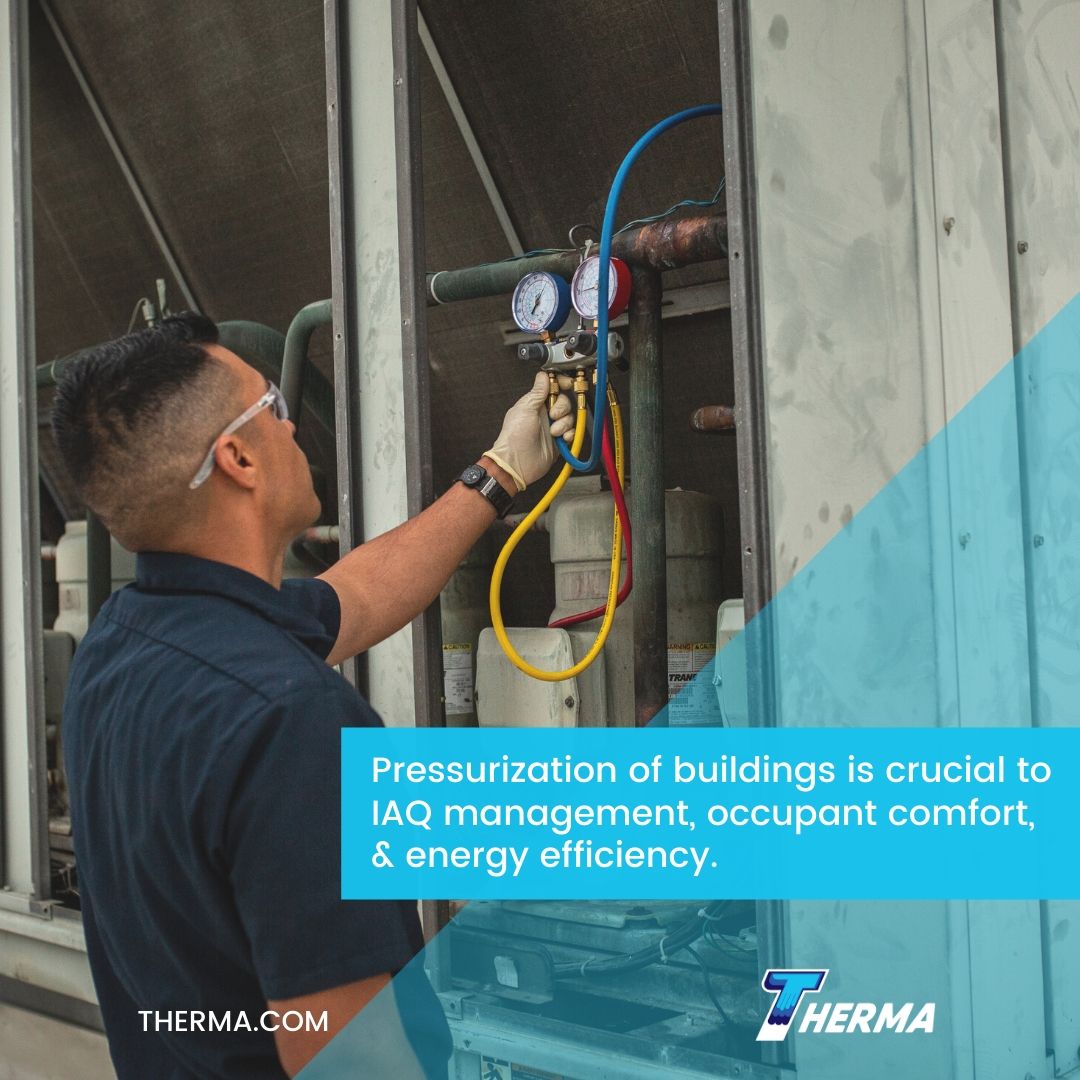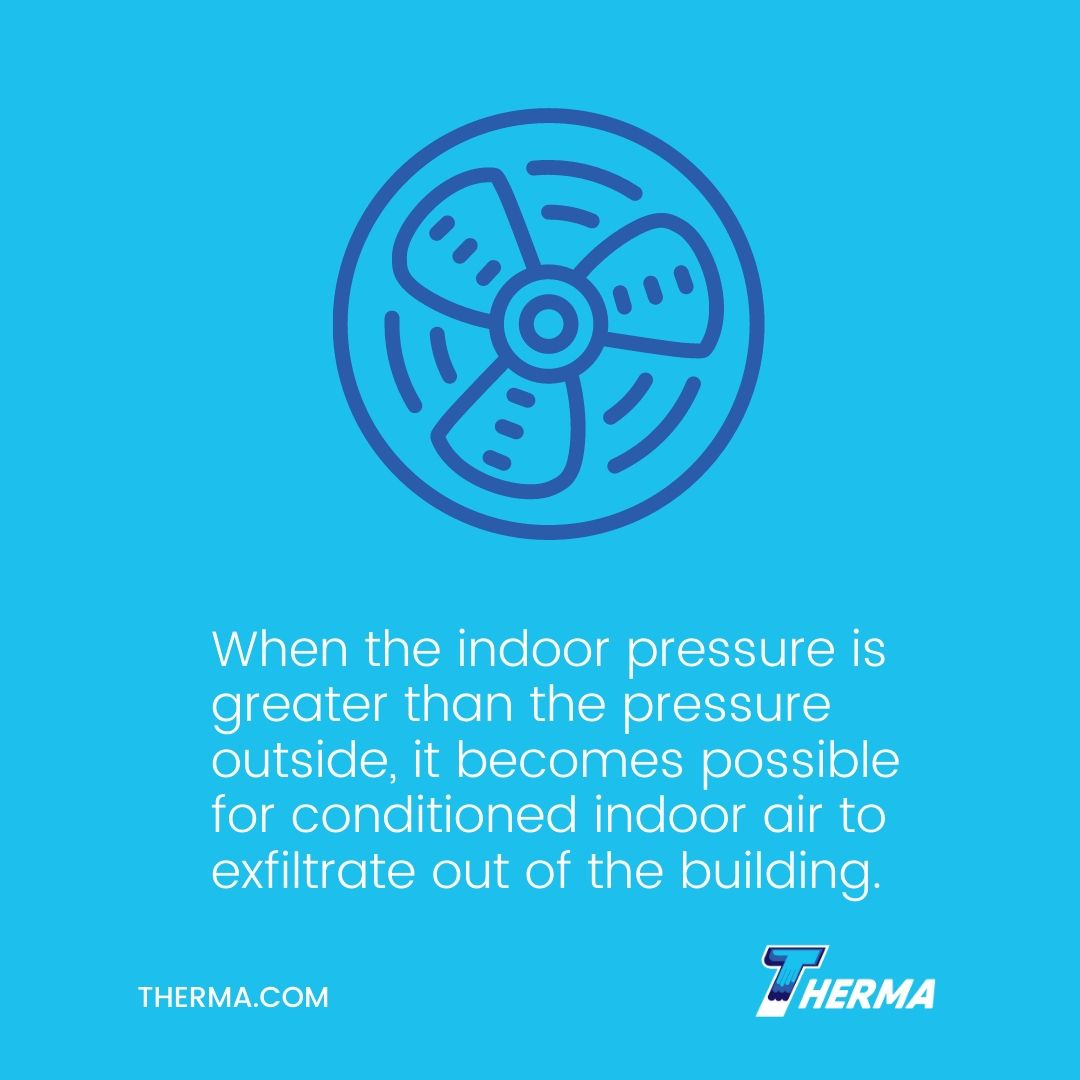Building pressurization is very important. Airflow in buildings can be extremely complex, with time-dependent and multi-directional variables. The operation of mechanical cooling, heating, exhaust, in addition to other ventilation systems can have an enormous impact on pressure. Still, interstitial airflow and interstitial air pressure fields are often overlooked during planning, construction and HVAC implementation.
Proper pressurization of buildings is crucial to indoor air quality (IAQ) management, maintenance of occupant health and comfort, not to mention maximizing energy efficiency. Lack of building pressurization management can allow infiltration of moisture, constant drafts in extreme weather and difficulty with doors at entrances and exits.
Air Pressure and Building Performance
Indoor air escaping from a building can affect pressurization, as will outdoor air entering into the building. Both instances can cause changes in indoor air quality, thermal comfort, HVAC efficiency, building energy costs and more.
Infiltration and Exfiltration
When a building’s internal pressure is less than the external pressure, it becomes possible for untreated outdoor air to infiltrate, or leak into, the building. Typically control strategies are implemented to prevent infiltration, thereby minimizing HVAC loads and reducing related operating costs. A small amount of infiltration in winter can help reduce moisture condensation. However, during the cooling season, infiltration of warm, moist air can increase latent loads and negative pressure can become excessive.
When the indoor pressure is greater than the pressure outside, it becomes possible for conditioned indoor air to exfiltrate, or leak out of, the building. Exfiltration in summer months of cool, dehumidified indoor air can provide some benefit to the building by keeping the envelope dry. However, excessive positive pressure can impede supply airflow, cause imbalances in building temperatures and encourage noisy, high-velocity airflow around apertures (in addition to condensation on cold surfaces inside walls during the heating season).
While excessive building pressure should be avoided whenever possible, a neutral pressure level (NPL), can be almost impossible to achieve, since building pressurization is a result of the combined effect of weather, wind and HVAC operation.
Controlling Pressure in Commercial Buildings
Central-station air handlers are typically employed to maintain occupant comfort in large commercial facilities. A return/relief fan can draw air back out of occupied spaces for recirculation through a filter or for the exhaust to remove heat from the building.
Return fans work best when they are managed by variable-frequency drives (VFDs). These receive and operate on a speed signal based on the building’s real-time differential static pressure.
Building differential static pressure is measured with a sensor. The sensor has two ports: a high-pressure port with tubing extended to an interior space and a low-pressure port with tubing that extends to the outside of a building. The sensor reports the difference in static pressure between the two ports to a building-automation system.
The goal is to keep interior-space pressure slightly positive relative to outdoor pressure. This can help reduce infiltration that could lead to indoor-air-quality (IAQ) issues or occupant discomfort.

Airflows
Exhaust airflow can be central or local and constant or variable. Specific types of spaces may be regulated regarding the minimum amount of exhaust produced (typically high contaminant areas like bathrooms.)
Relief airflow removes air from the building to maintain proper building pressure while balancing the rate at which air handlers bring air into the building (intake airflow.) The minimum amount of intake airflow for proper ventilation may also be regulated.
An economizer may adjust intake airflow to reduce cooling costs. If there is no infiltration and exfiltration, negative building pressure can still result if the combined exhaust/relief airflow is greater than the intake airflow. Alternatively, positive building pressure can occur if the combined exhaust/relief airflow is less than the intake airflow.
In variable air volume (VAV) air handling systems, fan tracking can measure supply and return airflows. The return-fan capacity can be controlled to maintain a constant difference between supply and return airflow, helping to achieve appropriate building pressurization.
Controlling airflow is key to proper building pressurization. Therma can help you successfully balance HVAC efficiency, heating and cooling costs without overlooking the comfort of building occupants.









